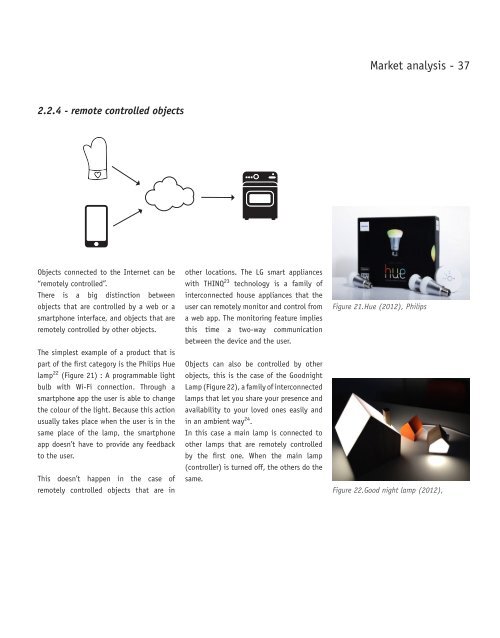TINK - sketching product experiences of connected objects
Tink is the result of my graduation project from the master in design for interaction at TUDelft. Tink is a web platform that connects products with one another via the Internet, it provides designers with a complete Internet of Things (IOT) development environment. Designers are provided with a rich stack of features to sketch, prototype and test IOT projects. Tink is a user-friendly, visual, collaborative, open-source tool for designers to build connected interactions among objects.
Tink is the result of my graduation project from the master in design for interaction at TUDelft.
Tink is a web platform that connects products with one another via the Internet, it provides designers with a complete Internet of Things (IOT) development environment.
Designers are provided with a rich stack of features to sketch, prototype and test IOT projects. Tink is a user-friendly, visual, collaborative, open-source tool for designers to build connected interactions among objects.
Create successful ePaper yourself
Turn your PDF publications into a flip-book with our unique Google optimized e-Paper software.
Market analysis - 37<br />
2.2.4 - remote controlled <strong>objects</strong><br />
Objects <strong>connected</strong> to the Internet can be<br />
“remotely controlled”.<br />
There is a big distinction between<br />
<strong>objects</strong> that are controlled by a web or a<br />
smartphone interface, and <strong>objects</strong> that are<br />
remotely controlled by other <strong>objects</strong>.<br />
The simplest example <strong>of</strong> a <strong>product</strong> that is<br />
part <strong>of</strong> the first category is the Philips Hue<br />
lamp 22 (Figure 21) : A programmable light<br />
bulb with Wi-Fi connection. Through a<br />
smartphone app the user is able to change<br />
the colour <strong>of</strong> the light. Because this action<br />
usually takes place when the user is in the<br />
same place <strong>of</strong> the lamp, the smartphone<br />
app doesn’t have to provide any feedback<br />
to the user.<br />
This doesn’t happen in the case <strong>of</strong><br />
remotely controlled <strong>objects</strong> that are in<br />
other locations. The LG smart appliances<br />
with THINQ 23 technology is a family <strong>of</strong><br />
inter<strong>connected</strong> house appliances that the<br />
user can remotely monitor and control from<br />
a web app. The monitoring feature implies<br />
this time a two-way communication<br />
between the device and the user.<br />
Objects can also be controlled by other<br />
<strong>objects</strong>, this is the case <strong>of</strong> the Goodnight<br />
Lamp (Figure 22), a family <strong>of</strong> inter<strong>connected</strong><br />
lamps that let you share your presence and<br />
availability to your loved ones easily and<br />
in an ambient way 24 .<br />
In this case a main lamp is <strong>connected</strong> to<br />
other lamps that are remotely controlled<br />
by the first one. When the main lamp<br />
(controller) is turned <strong>of</strong>f, the others do the<br />
same.<br />
Figure 21. Hue (2012), Philips<br />
Figure 22. Good night lamp (2012),


